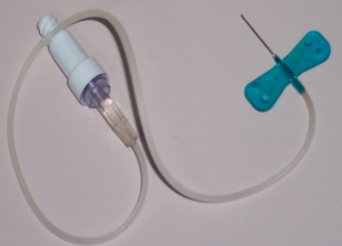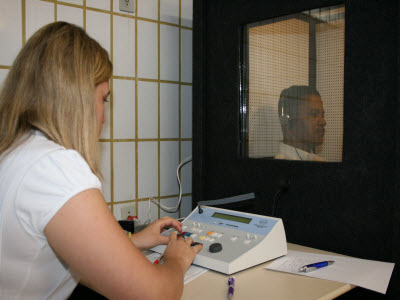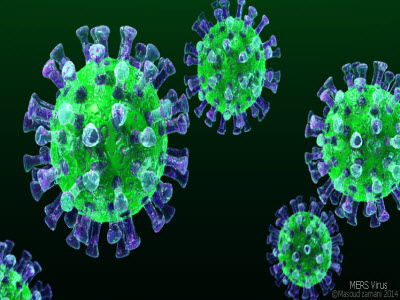Top 15 Phlebotomist Interview Questions
1) What are the types of anti-coagulants used by Phlebotomy?
• EDTA
• Sodium Polyanetholesulfonate
• Potassium EDTA
While, some also use Heparin as an anti-coagulant
2) Explain what is thrombin time?
Thrombin time is a screening of coagulation time, where the time is noted to form fibrin from fibrinogen in plasma. Normal, thrombin time is less than 20 seconds.
3) Explain what is the basic technique to collect blood?
To collect blood sample the basic technique include
• Tie the belt (tourniquet) around the upper arm and about 2-3 inches above the venipuncture site
• Make sure that your belt does not lose the grip from hand
• It will exert pressure on the vein, and your vein will emerge out clearly.
• Palpate the vein and locate the best site for blood collection
• Always wear gloves while performing these activities
• Apply disinfectant to sterile the site of collection
• Now insert syringe with the correct angle, and draw the blood out and collect it in a sample tube
• Once you collect the blood, never forget to loosen the belt from patient arm, otherwise it will spill blood all over.
4) Give all information that should be mentioned on the label of the sample tube?
Sample tube should have all the information like
• Patient’s Information’s ( first, middle and surname)
• Patient’s ID number (Note: The above-given information must match the same on the requisition form)
• On the label of each tube date, time and initials of the phlebotomist must be mentioned on the tube
5) Explain what one should do in case of incomplete collection or no blood is obtained?
If you fail to collect blood after puncturing, then in such situation, you have to do following things
• Change the position of the needle and move it forward
• Or move it backward, if it has penetrated too far
• Set the needle at correct angle, the bevel may be against the vein wall
• Loosen the belt, it may be suppressing the blood flow
• Use another tube
• Re-anchor the vein, vein sometimes slip away from the point of the needle
Even trying all this technique does not help then try another puncture at another site.
6) Explain how you collect blood sample in infant?
Usually to collect blood sample from infant, blood should be collected from the foot, from the heel region.
• Pre-warm the infant’s heel, not too much that it hurts the infant ( 35-40 degree C) for 3-5 minutes, it increases the blood flow and helps to detect blood capillaries easily
• Puncture the site with a sterile lancet
• Never use the central portion of the foot or too wide of the heel
• Puncture across the heel print lines
• With a clean and dry cotton piece wipe away the first drop of blood, and collect the sample from the second drop of blood
• Again apply some sterile solution to the puncture site to stop bleeding
7) Explain what is Whole Blood sample?
A Whole Blood sample is referred to a blood that is drawn and mixed immediately with an anti-coagulant to maintain the characteristics of the blood cells and prevent clotting, allowing whole blood analysis to be done. In short, the blood that is not allowed to clot after collecting from the patient is referred as whole blood sample.
8) What are different color tubes used in phlebotomy and what does it indicates?
The sample tube or blood collection tube has different color top on it which indicates what test need to be done on it.
• Red Top: Immunology and Serology testing
• Golden Top: Immunology and Serology testing, but use different chemicals to perform the test
• Light green Top: For Chemical testing
• Red gray Top: For Chemical testing but use different chemical then Light green top
• Purple Top: Hematology testing
• Light blue Top: Coagulation tests
• Dark green Top: For whole blood testing using heparin
• Dark blue Top: For whole blood testing using EDTA
• Light Gray Top: Blood sugar testing
• Yellow Top: DNA testing, paternity testing and HLA tissue testing
• Yellow black Top: Microbiological testing ( Aerobes, anaerobes and fungi)
• Black Top: For testing like Westergren Sedimentation Rate
• Orange Top: STAT serum chemistries
• Brown Top: Serum lead determination
9) What tests are commonly performed for checking kidney functions?
For checking kidney functions the tests performed are
• Creatinine test: High level of creatinine in urine indicates kidney may not be working properly
• Urea: High level of urea in urine indicates kidney may not be working
• eGFR (Estimated Glomerular Filtration Rate): Normal value of eGFR is 90-120 ml/min, anything below 90 ml/min suggests there are some kidney problems
• Dissolved Salts: Sodium, potassium, chloride and bicarbonate are electrolyte, any alteration in the level of this electrolyte may be due to the kidney dysfunction
10) Explain what is HIV test window period?
HIV test window period is the time interval between the original infection with HIV and the appearance of detectable antibodies to the virus. Window period is about 14-21 days, while in some case up to 12 weeks. In other words, a blood sample from HIV patient will show no sign of HIV infection if he/she is in window period, and his blood will show all HIV test negative, till it surpasses the window period. It’s only after window period, you will able to detect virus in blood sample and see the infection in the blood sample of the HIV patient.
12) How soon you able to detect whether the patient is infected by HIV, if he is in the “Window Period”?
If HIV patient is in Window Period there are different level of test, they are
• First generation Test: They can detect antibodies after 40-60 days of infection
• Second generation Test: They can detect antibodies after 21-24 days of infection
• Third generation Test: They can detect antibodies after 14-15 days of infection
13) Explain what are the possible risk that is associated with arterial sampling in neonatal?
• Collapse of veins if the tibial artery is damaged while puncturing the medial aspect of the heel
• Osteomyelitis of the heel bone
• Possibilities of nerve damage if the fingers of neonates or infants are punctured
• Hematoma
• Scarring
• Generalized or localized necrosis






